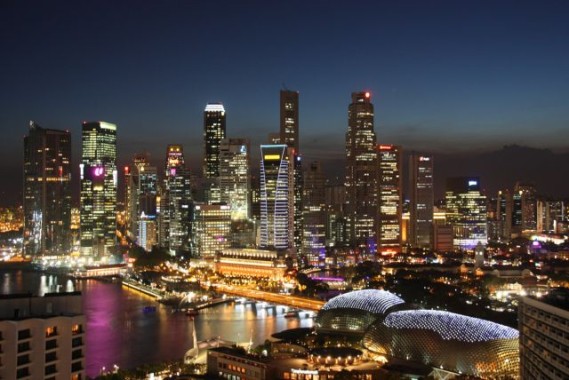I am not the only one who has compared Panama and it growth trajectory with that of Singapore. Certainly, we are starting to look a lot like this first world southeast Asian city-state and we may be headed in that direction over this decade. Now they report a 52% increase in trade with Latin America over the last two years. Their populous and the demographics are incredible with 38% of the households have over $1 million in net assets. What they have and we can benefit greatly are systems and operations. Singapore is a world leader in airport, port and logistics management.
This story s reported in the Latin Business Chronicle
In 2011 Latin Business Chronicle rankings show that Singapore climbed three places to become the 7th largest exporter to Latin America with $16 billion in sales, and an outstanding 52 percent increase from 2010. Opportunities for Latin business, in an interview with Group Director for the Americas of IESingapore.
Singapore is always a source of amazement. A Third World country in the 1960s, became a developed nation in just one generation. Not only that, but in 2012 it is the second most competitive economy in the world, and its newly acquired opulence shows in statistics such as this one: 38 percent of its households have more than $1 million in assets.
Latin Americans businessmen have realized that there is an open opportunity in this 5-million city state, and at last, the distance between Singaporean and Latin American entrepreneurs has begun to narrow down.
In 2011 Latin Business Chronicle rankings show that Singapore was Latam’s 11th largest trade partner. It climbed three places to become the 7th largest exporter to Latin America with $16 billion in sales, and an outstanding 52 percent increase from 2010. It also became the 14th largest Latin export market with $8.9 billion in sales and a 39.9 percent increase from 2010.
But trade can be increased. To increase mutual awareness, International Enterprise Singapore holds the Latin Asia Business Forum, a one-day meeting every year which brings together business, government and media from both sides of the Pacific.
As part of this program, Jayakrishnan Gopalakrishnan, Group Director for the Americas of IESingapore, highlighted in an exclusive interview with Latin Trade some of the areas that could offer clear trade opportunities for entrepreneurs in Singapore and Latin America.
The energy sector is one of them, although it has already been active for some years, he said. In Brazil, some Singaporean companies have well-established relationship with Petrobras. “Cooperation in energy will continue,” Gopalakrishnan said. And there are interesting opportunities. Three Singaporean companies have received US$9.8 billion in orders from Latin America, primarily from Brazil.
There is also a mutual interest in infrastructure. “Latin America needs investment in infrastructure, but also requires the transfer of operating models,” Gopalakrishnan said. Singapore is a world leader in airport, port and logistics management.
The executive also foresees an increase in demand for operating models for cities. “They pose a real challenge in traffic management, water treatment, housing solutions or master planning. These are critical competencies which Singapore firms have developed extensively.”
In the reverse direction, the expert finds that Latin America has technology to use renewable energies such as hydroelectric power, which can be deployed in Asian markets.
There are other opportunities open in consumer markets. “Young populations are demanding similar services: insurance, education, lifestyle products and services, food and beverages. There is great potential for the flow of these ideas both ways. There is appetite for new ideas,” he concluded.
Despite the possible negative effects of a global recession on this Asian nation so dependent on trade, deals with Singaporeans have opened the eyes to Latin businesspeople. They will possibly be seen at Changi airport with ever-increasing frequency. This year alone Jayakrishnan Gopalakrishnan has seen 24 business delegations from the region. Need more evidence?
